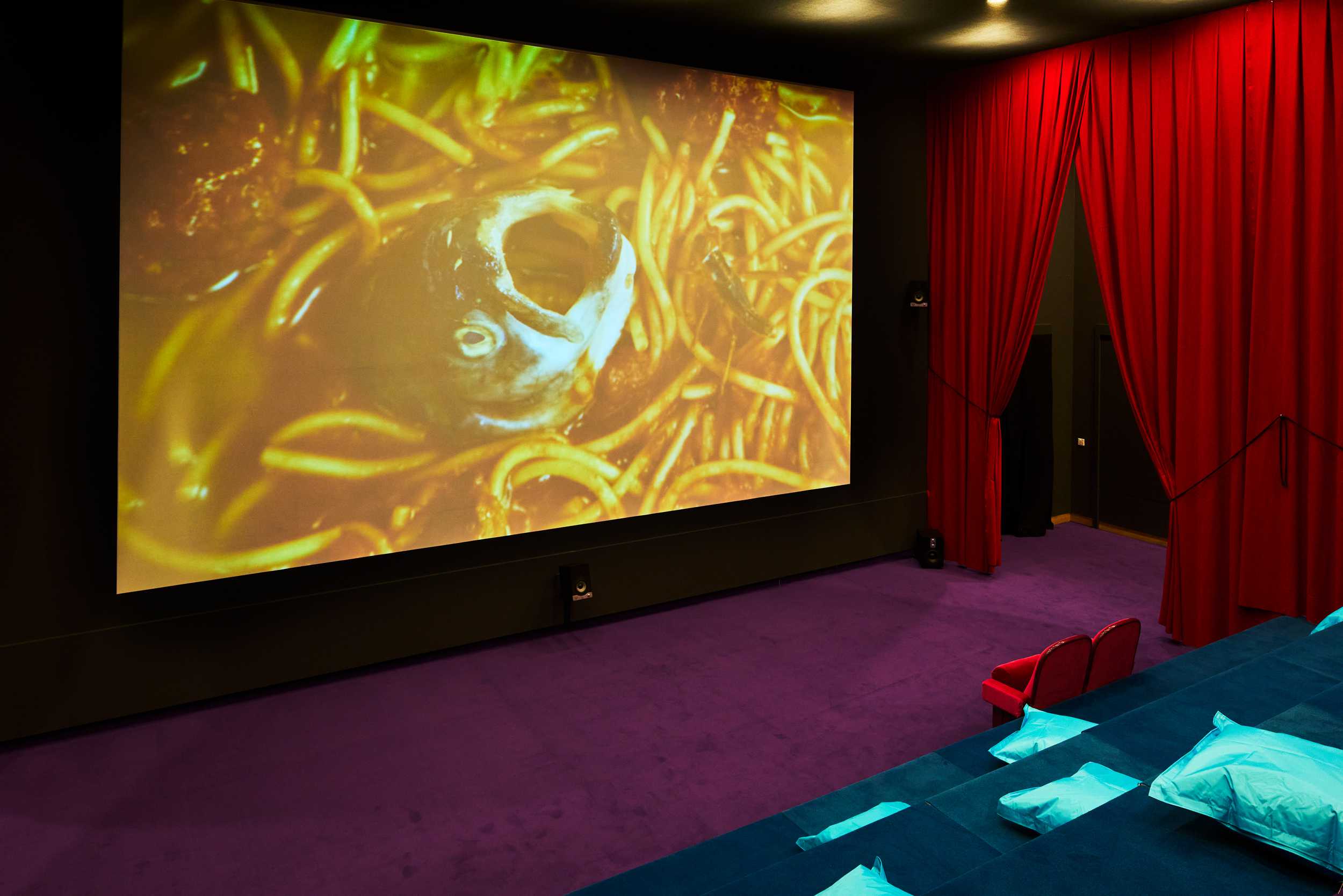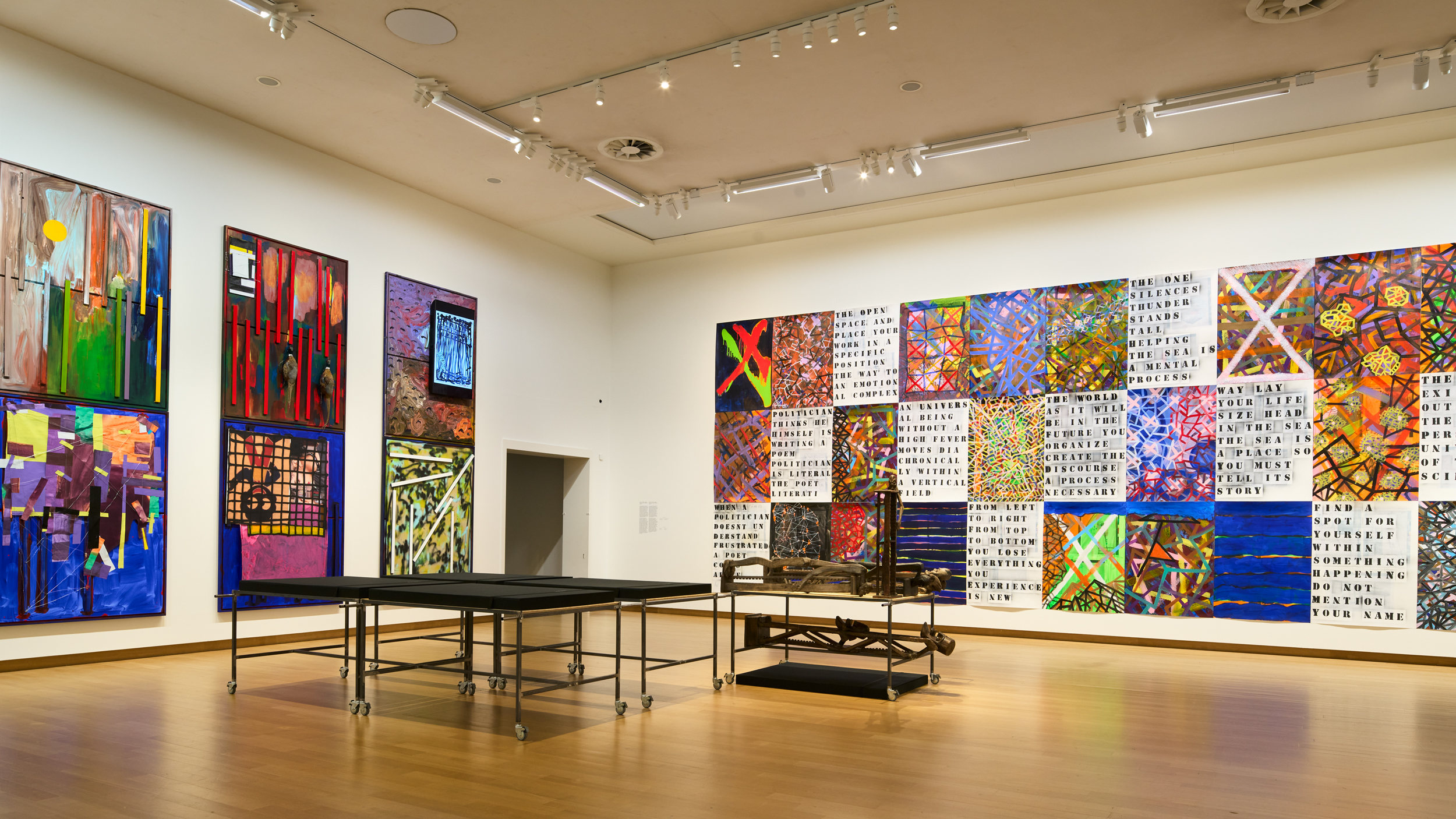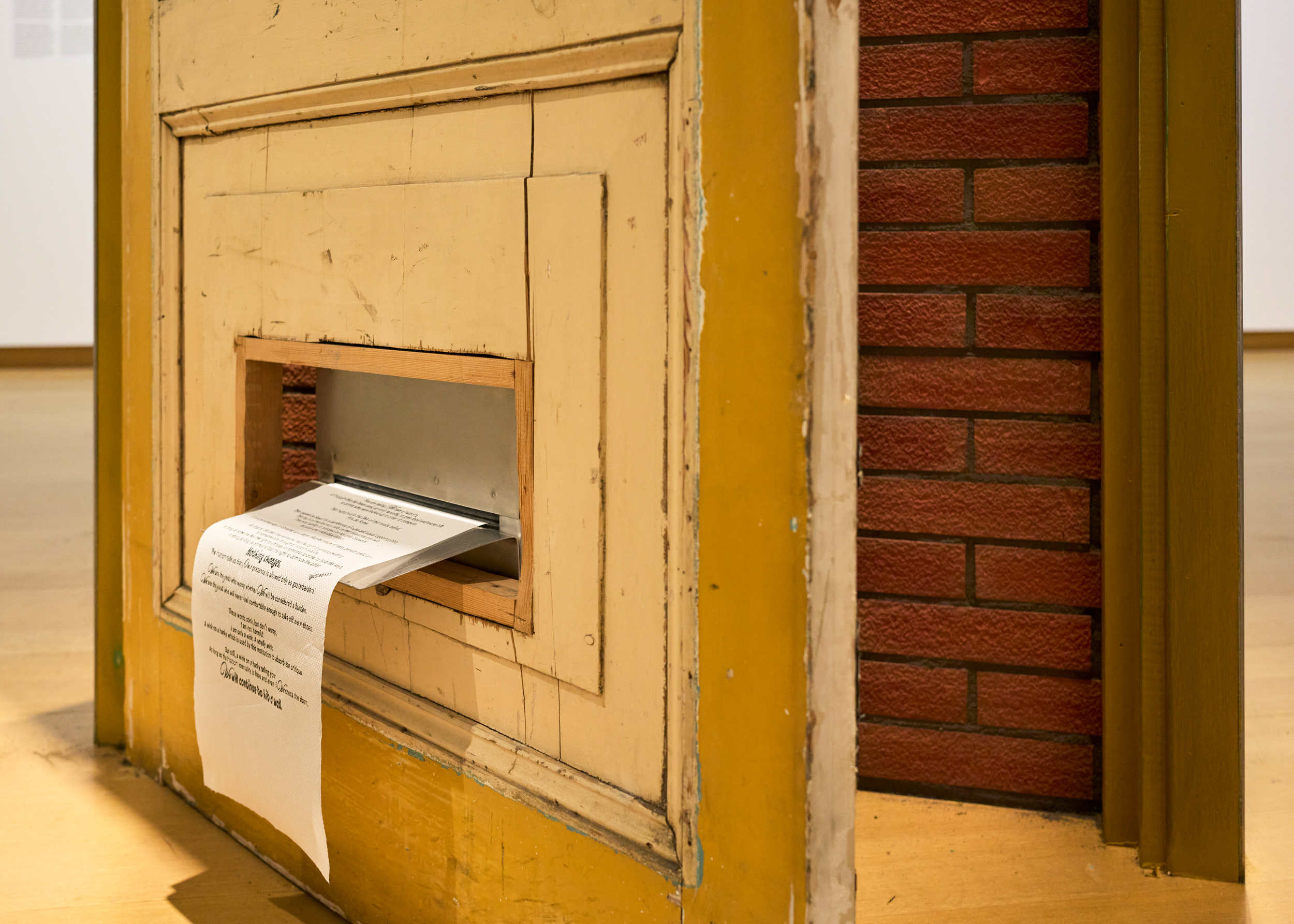Prix de Rome
Stedelijk Museum Amsterdam
14 October 2023 – 3 March 202417-11-2023
I hesitate at the prospect of reviewing the “Prix de Rome,” a show that proceeds by committee, offering only compromised positions for all involved. It’s not exactly curated, and not exactly an exhibition, and yet reflecting on the prize itself is its own kind of mousetrap, another way to fixate on the institution(s); but I must admit that I write to you dear readers with my limbs spread akimbo, my fur firmly cemented to its glue-lined surface.
The Pee-dee-Rrrr: a biannual ritual whose purpose, like many antique rites, is obscure. Personally, I’d like to see it go. Like the Dutch royal family itself, it seems to have emerged from a nineteenth century nationalism that is, if not as remote as we would like, extrinsic to our times. It seems somehow especially adrift in the Stedelijk Museum, which has... let’s call it an “active disinterest” in the Dutch art scene. I am not referring here to the Stedelijk’s exhibition calendar — conservative though it may be — but to a detachment from the rhythm of art, its making, exhibiting, discussing and forgetting embedded in every city or country. Rather than being at the table, the Stedelijk is a dozing uncle in an adjacent room. The PdR was not designed to attend or compensate for this absence — its role may be more modest, an investment in the practices of four individuals, or an opportunity for an artist to respond directly to these institutions and funding bodies — but it says very little about “the state” of X or Y, and I’m not sure what meanings could be gleaned by viewing it, let alone “winning“ it, or “reviewing” it.

“And the nominees for Best Picture are ...” Whenever visiting the PdR I find myself thinking about how certain practices fit well or awkwardly within the format of the prize show. Lacking the thematic elements of a group show or the autopoietic potential of a solo presentation, the PdR feels a bit more like an experiment to see how a practice can be extruded into a particular shape or form. Josefin Arnell and Jonas Staal each offers a stand-alone project that extends the artists' bodies of work. Arnell’s film Buurthuis 2 (2023) is a community theater take on the haunted house movie, a genre which often plays on the ghastly legacies sequestered in the hidden chambers of real estate. Here, however, it is a neighborhood community center that is haunted, not by the ghosts of its past capital accumulation, but the coming expropriation of a vampire property developer. Staal, the winner of the PdR, presented an essay film about Ascension Island, an unassuming rock in the middle of the Atlantic Ocean transformed over the last few centuries by diverse agents of imperial nation states. The film Empire’s Island (2023) takes the form of a multi-part lecture with chapter titles that reference stages in the historical development of the titular Empire. Like Arnell’s video, there is a kind of horror narrative, but its protagonist Empire tends to be referred to in terms characteristic of a freshman year political science essay: abstract yet agential, very little is revealed about this spectral Empire, which the video paradoxically mystifies.

Michael Tedja’s installation feels like an excerpt from a much larger project. Tedja’s works exist within a fictional institution called the Holarium, a kind of archive or collection that he has worked with in numerous texts, paintings and installations for at least two decades. Large black boxes contain 232 newly made paintings, rendering them invisible but present, and point towards the absent bodies of work. This absence is not so much thematic, as the funereal tables on which the black cases rest might suggest, as it is a barrier to thinking along with the work. Honestly, the Stedelijk should just organize a solo presentation of Tedja. The work moves centrifugally, the inverse of Jonas Staal’s miniaturizations, and the PdR is too narrow a frame.
Of the projects highlighted this year, only Ghita Skali seems to address the question of the PdR’s why and whatfor. The work, a sculpture occupying a modest corner of the gallery, contains a door once installed in the former examination rooms of the PdR. The architectural fragment connects to Skali’s intervention at De Ateliers, a hole cut in the floor of the Director's office (The Hole’s Journey, 2020), a work I quite liked. The connection between the door and the hole is a direct one, as De Atelier’s is the former site of the Rijksakademie, which used to host the PdR. Unlike the hole, however, the sculpture on view at the Stedelijk can only point towards the object of its critique. Its mediations feel frustrated, even as frustration is their mode, and I’m right there with them, dear reader, squeaking these words from the mousetrap.

Do mice squeak? Do we chirp? Nay; this rodent doth wheeze his trewth: not a huge fan of prize shows. They seem premised on a misunderstanding. There is a time-honored tradition of elevating individuals from within a particular community, and often for all the wrong reasons. Artists can and must become singularities (whether individual or collective), and often we experience art in this state; but that is a process which only begins from mutual structures of feeling and contested terms that we dream and détourne, enchant or ransack. Those are the rhythms of an art scene that I allude to: not only the tempo of its social diary, but also of its REM.